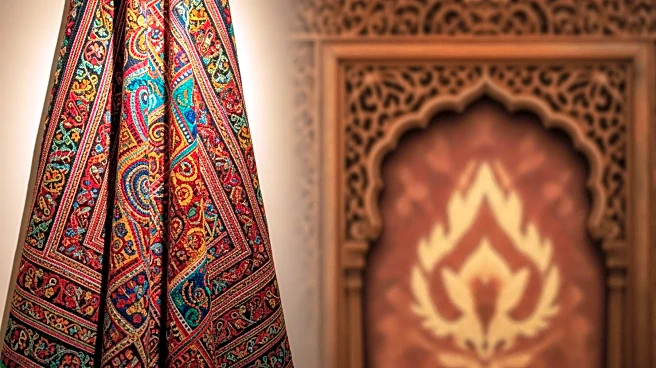What's Happening?
The art market is experiencing a shift as sanctions on Iranian art have led buyers to turn their attention to Indian art. The geopolitical tensions and sanctions have made it difficult to export Iranian art to major
markets like the US and UAE, reducing its attractiveness to buyers. Consequently, there has been a rise in the demand and prices for Mughal art, reflecting the growing influence of South Asian capital in the international art market. This trend is evident in recent auctions where Indian art, particularly high-quality paintings of elite provenance, has performed well.
Why It's Important?
This shift in the art market highlights the impact of geopolitical factors on cultural and economic exchanges. The sanctions on Iranian art not only affect the market dynamics but also influence cultural heritage preservation and the global art narrative. The increased interest in Indian art signifies a broader acceptance and appreciation of South Asian cultural contributions, potentially leading to a redefinition of the 'Islamic art' category. This development could benefit Indian artists and galleries, providing them with greater visibility and financial opportunities in the global market.
Beyond the Headlines
The changing art market dynamics also raise questions about cultural representation and the preservation of heritage. As the focus shifts from Iranian to Indian art, there is a risk of losing the rich cultural narratives embedded in Persian art. Additionally, the sanctions may inadvertently stifle the cultural exchange and understanding that art facilitates. The rise of Indian art in the market could also lead to increased investment in cultural infrastructure and education in South Asia, fostering a new generation of artists and collectors.













